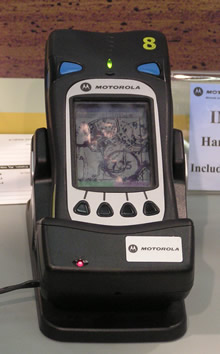Elbit and Motorola are fielding an integrated command and control system designed to improve the IDF operations during low intensity conflict (LIC). The system, which went through rigorous testing and evaluation by the IDF, utilizes ruggedized COTS systems, including the INCA Plus (HDT 600) personal digital assistant (PDA) produced by Motorola. LIC C2 system uses cellular communications and GPS and transmit voice, data, automated reports and images between the command and control centers and mobile and dismounted units. The system also tracks the location and status of each unit, and use the information to create a unified situational picture shared by all forces.
Skunk Works and XTEND Simplify Multi-Drone Command
Tamir Eshel - 0
Lockheed Martin Skunk Works® and XTEND have achieved a major milestone in JADC2 by integrating the XOS operating system with the MDCX™ autonomy platform. This technical breakthrough enables a single operator to simultaneously command multiple drone classes, eliminating the friction of mission handoffs. From "marsupial" drone deployments to operating in GPS-denied environments, explore how this collaboration is abbreviating the data-to-decision timeline and redefining autonomous mission execution.
Israel Pursues Loitering Weapons for Main Battle Tanks
Arie Egozi - 0
The Israeli Ministry of Defense (IMOD) is evaluating initial proposals from some local companies to decide what types of loitering weapon systems will be deployed on Israel's Defense Forces (IDF) Merkava 4 main battle...
DefenseTech Weekly Brief | April 14-21, 2025
This week’s DefenseTech Brief captures a defense landscape in flux—driven by urgent needs for missile defense, advanced autonomy, and sovereign production capabilities. Across domains and continents, governments and industries are accelerating the integration of...
NATO AI Modernization: Palantir’s Maven Smart System Acquisition
Tamir Eshel - 0
This article is part of our weekly DefenseTech Brief.
NATO has taken a significant step in modernizing its warfighting capabilities by rapidly acquiring an AI-enabled platform from Palantir Technologies. On March 25, 2025, the NATO...
Controp: Defining Clarity with End-to-End EO/IR Solutions
Tamir Eshel - 0
Founded in the late 1980s, Controp has evolved from a boutique electro-optical house to a global provider of integrated EO/IR solutions. Leveraging advanced optics, sophisticated stabilization, and AI-driven analytics, the company’s “Defining Clarity” ethos shapes a new era of defense capabilities, offering enhanced situational awareness for air, land, and maritime operations.




















